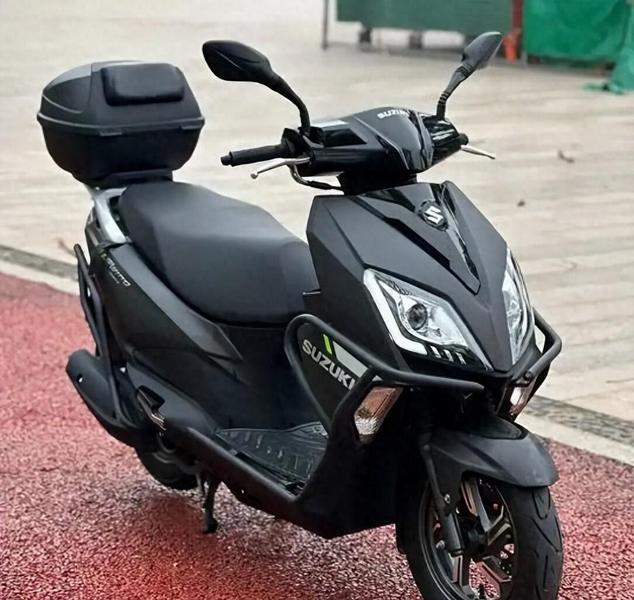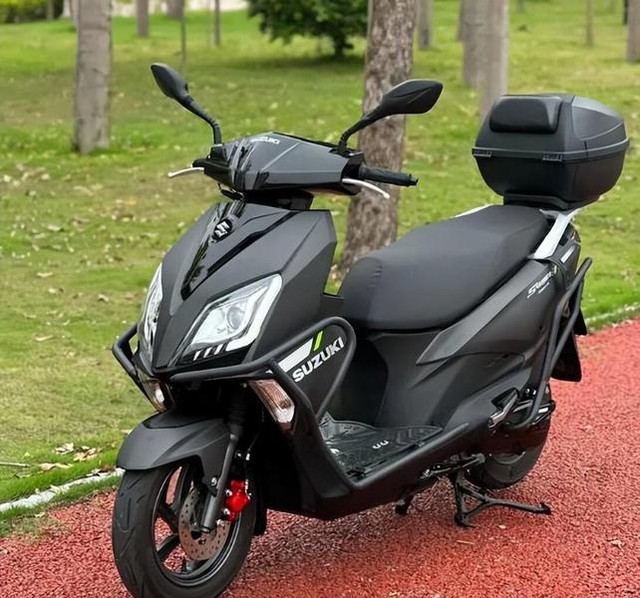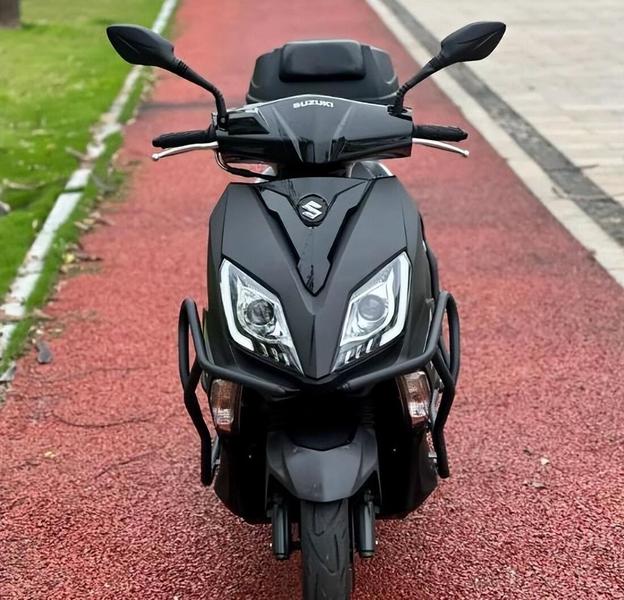Rumors of Suzuki’s upcoming release of an ABS version of their UY125 scooter model have sparked a frenzy among China’s scooter community, with eager anticipation spreading like wildfire.
Despite the lack of official images from the brand, social media platforms in the country are buzzing with questions like “When will the ABS version be released?” and “Will the price be under 13,000 RMB (approximately 47 million VND)?”
Ironically, while official information remains scarce, many vehicle owners have already taken it upon themselves to “upgrade” their scooters with ABS systems from external sources, creating potentially risky modified versions.

The Suzuki UY125 is a product developed and manufactured through the company’s joint venture with Chinese partner, Qingqi. This model is part of Suzuki’s strategy to compete in the 125cc scooter segment in this populous market.
From Technical Specs to Fierce Debate
The controversy began in August last year when China’s Ministry of Industry and Information Technology released the technical data for the UY125T-2A model. Sharp-eyed observers noticed subtle changes: the scooter was 2kg heavier, and the bumper and lights were now optional extras. However, the highly anticipated ABS braking system was notably absent.
In March this year, when the product catalog was updated, the UY125 maintained its original engine, while the classic US125T model made a surprise appearance, leaving scooter enthusiasts in China feeling like they had ordered beef stew but received a plate of cucumbers instead—a far cry from their expectations.
In reality, in a market of a billion people, competitors like Haojue had already equipped their AFR125S model with a single-channel ABS system last year, while the Honda NX125 features standard CBS braking. Suzuki, however, has been slow to incorporate new technologies into their models.

Suzuki’s “U” series scooters in China are typically designed with a compact form factor, making them ideal for urban commuting.
The Pitfalls of “Cheap” ABS and the Headache of Costs
Another pressing issue is the cost. The current UY125 model is priced at just over 10,000 RMB (approximately 36 million VND). Integrating an authentic ABS system could increase the price by at least 2,000 RMB, excluding maintenance and operational costs.
However, the bigger concern is the proliferation of untrusted components in the aftermarket. On e-commerce platforms like Taobao, users can easily find “ABS kits” for as little as 500 RMB—these are often cheap imitations sourced from electric scooters.
Consequently, these makeshift modifications can lead to tragic accidents. Recently, a rider in Zhejiang had to brake hard on a rainy day, and their scooter spun three times in the middle of the road due to a malfunctioning ABS system.

The Suzuki UY125 utilizes a similar engine to the Suzuki Swing 125. This 125cc air-cooled engine is primarily designed and manufactured for the Chinese market.
The Configuration Conundrum: It’s Not Just About Brakes
China’s scooter market is evolving at a rapid pace. Consumers are no longer solely focused on durability and fuel efficiency; they now demand cutting-edge technology and enhanced riding experiences.
Wuyang Honda, for instance, shocked the market by introducing a TFT dashboard and keyless ignition to their 125cc line while keeping the price under 13,000 RMB (nearly 47 million VND). Meanwhile, the Haojue AFR125S ABS version, priced at only 11,000 RMB (nearly 40 million VND), has captured 30% of the market share.
A survey revealed that 70% of consumers would be willing to switch brands if the ABS-equipped UY125 exceeded the 13,000 RMB price point.
However, there are still loyal Suzuki enthusiasts like Mr. Zhang, a delivery rider who has been using the UY125 for five years. He shared, “Japanese engines are still more reliable than domestic ones. I’ve been delivering for three years without any repairs. If an ABS version becomes available, I’m willing to pay an extra 2,000 RMB to upgrade.”
According to Moto Fine, a website specializing in motorcycle industry analysis in China, the ABS-equipped Suzuki UY125 is expected to be released around September this year, coinciding with last year’s upgrade schedule.
Leaked information from dealers suggests a price range between 11,800 and 12,800 RMB—positioning it between Haojue and Honda.
However, promotional images still show a drum brake on the rear wheel, indicating that ABS will only be available on the front wheel. Some have likened this to installing a bicycle bell on a sports car—doing little for safety and more for cost control.

If Suzuki continues with their current conservative upgrade approach, the UY125 will lose its iconic status and become a mere memory. Nonetheless, caution has its merits. After all, no electronic system can match the reliability of a steady hand on the throttle.
In essence, the debate around equipping the UY125 with ABS reflects a broader trend of consumer upgrade preferences in the motorcycle industry. While durability used to be the primary concern, today’s consumers, especially the youth, seek vehicles that are “both stylish and technologically advanced.”
Ultimately, adding an ABS braking system to smaller-displacement scooters is akin to purchasing insurance: it may seem unnecessary at first, but when the need arises, it becomes the most crucial feature.
















